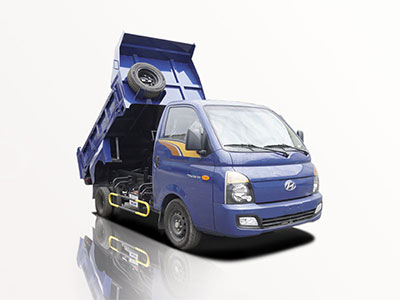Introduction
Pressure cleaning trucks have become an essential asset for various industries, from residential to commercial cleaning. These specialized vehicles allow for efficient and effective cleaning, making them popular among cleaning businesses and contractors. In this comprehensive article, we will explore everything there is to know about pressure cleaning trucks, including their features, benefits, applications, and maintenance. We will also dive into practical tips for using these vehicles and answer some frequently asked questions to equip you with all the necessary information.
Understanding Pressure Cleaning Trucks
What is a Pressure Cleaning Truck?
A pressure cleaning truck is a mobile unit equipped with high-pressure cleaning systems. These trucks are designed to facilitate various cleaning tasks, including washing surfaces, removing grime, and sanitizing areas. They come with built-in water tanks, high-pressure pumps, and specialized nozzles to deliver powerful cleaning solutions.
How Pressure Cleaning Trucks Work
Pressure cleaning trucks operate by using high-pressure water jets to remove dirt, mold, mildew, and other debris from surfaces. The key components that help in this process are:
- High-Pressure Pump: Generates the necessary pressure to force water through hoses and nozzles.
- Water Tank: Holds a suitable amount of water for washing without the need for additional sources.
- Nozzles: Allow users to control the water flow and pressure for different cleaning tasks.
- Cleaning Solutions: Specialized detergents can enhance cleaning efficiency.
Benefits of Using a Pressure Cleaning Truck
Efficiency and Speed
Pressure cleaning trucks can complete cleaning tasks faster than traditional methods. The high-pressure systems minimize labor time and maximize results, making them ideal for large surfaces like driveways, parking lots, and buildings.
Versatility
These trucks can be used for a variety of applications. From small residential jobs to large commercial contracts, they are adaptable for different cleaning situations, such as:
- Deck and patio cleaning
- Roof cleaning
- Heavy machinery maintenance
- Graffiti removal
Cost-Effective
Investing in a pressure cleaning truck can be cost-effective in the long run. By saving on manual labor and reducing cleaning time, businesses can increase profitability and overall efficiency.
Key Features of Pressure Cleaning Trucks
Storage Capacity
One of the essential features of pressure cleaning trucks is their storage capacity. They typically include:
| Feature | Description |
|---|---|
| Water Tank Size | Varies from 100 to over 500 gallons, depending on the truck. |
| Storage for Equipment | Organized compartments for hoses, nozzles, and other tools. |
High-Pressure System
The heart of any pressure cleaning truck is its high-pressure system, which can vary significantly:
| Pressure Rating | Typical Use |
|---|---|
| 1200 – 2000 PSI | Residential cleaning tasks like patios and driveways. |
| 2000 – 4000 PSI | Commercial tasks and heavy-duty cleaning. |
Common Applications of Pressure Cleaning Trucks
Residential Cleaning
Homeowners benefit from pressure cleaning trucks for maintaining the aesthetics of their properties. Common residential services include:
- Washing siding and gutters
- Cleaning driveways and sidewalks
- Maintaining outdoor furniture and decks
Commercial Cleaning
Businesses utilize pressure cleaning trucks for a range of cleaning services, such as:
- Fleet washing for vehicles and equipment
- Periodic maintenance of commercial properties
- Graffiti and junk removal
Choosing the Right Pressure Cleaning Truck
Consider Your Needs
When selecting a pressure cleaning truck, consider the type of cleaning services you intend to provide. Evaluate factors such as:
- Type of clients (residential vs. commercial)
- Common surfaces to clean
- Required pressure and flow rate
Budgeting
Pricing for pressure cleaning trucks varies significantly based on features and specifications. When planning your budget, consider:
- Initial cost of the truck
- Maintenance and repair expenses
- Operational costs such as fuel and cleaning solutions
Practical Tips for Using Pressure Cleaning Trucks
Preparation Before Use
Before operating a pressure cleaning truck, it’s essential to prepare properly:
- Inspect the truck and its components for any damages.
- Ensure your water tank is full and ready to use.
- Select the appropriate nozzles for the task at hand.
Safety Precautions
Safety should be a top priority when using a pressure cleaning truck. Follow these precautions:
- Wear protective gear including gloves, goggles, and non-slip shoes.
- Never point the pressure nozzle at yourself or others.
- Be cautious of slippery surfaces while cleaning.
Maintenance Tips
Regular maintenance can prolong the life of your pressure cleaning truck. Consider the following:
- Flush the system after each use to prevent build-up.
- Inspect hoses and seals for wear and tear.
- Perform routine oil changes for the engine and pump.
Frequently Asked Questions
What is the average cost of a pressure cleaning truck?
The cost can range from $25,000 to over $100,000, depending on features, size, and brand. It’s advisable to analyze your needs and budget before making a purchase.
How often should I maintain my pressure cleaning truck?
Regular maintenance should be performed as needed, but it is recommended to conduct a thorough inspection every few months or after intense use.
Can I use a pressure cleaning truck for residential tasks?
Yes, pressure cleaning trucks are versatile and can handle both commercial and residential cleaning tasks effectively.
What are the environmental impacts of pressure cleaning?
Using eco-friendly cleaning solutions and responsible water use can minimize the environmental impact of pressure cleaning operations.
How do I choose the right spray tip for my cleaning job?
Select the spray tip based on the cleaning nature. For instance, a narrow tip is ideal for tough stains, while a wider tip works for larger surfaces.
Are pressure cleaning trucks easy to operate?
With proper training, operating a pressure cleaning truck is relatively straightforward. Most units have user-friendly interfaces and controls.





